Last updated: December 9, 2021
Article
Report Collection Spotlight: Historic Structure Reports
This is part of a series that spotlights the collection of planning, management, and research documents for National Park Service cultural landscapes and historic structures. In this article, we look into the documentation and planning work that goes into preserving historic structures. Find other articles in the series at Cultural Landscape and Historic Structure Reports.
What are Historic Structures?
Historic structures, one of the five cultural resource types preserved by the National Park Service, are more than just old buildings. Historic structures vary widely in character, use, origin, and surroundings, and the history of historic structures in national parks spans thousands of years.
A Variety of Styles and Functions
Earthen mounds, like those at Hopewell Culture National Historical Park, are structures that provide evidence of the Eastern Woodland Culture (BCE 1000 to CE 1000). Native Americans in the western part of the continent, responding to climate and building materials, established their own building forms and techniques. For example, the ancestral Puebloan people developed a pueblo building technology consisting of mud bricks, adobe plaster, and cedar logs, as seen in the cliff dwellings at what is today Mesa Verde National Park.

NPS
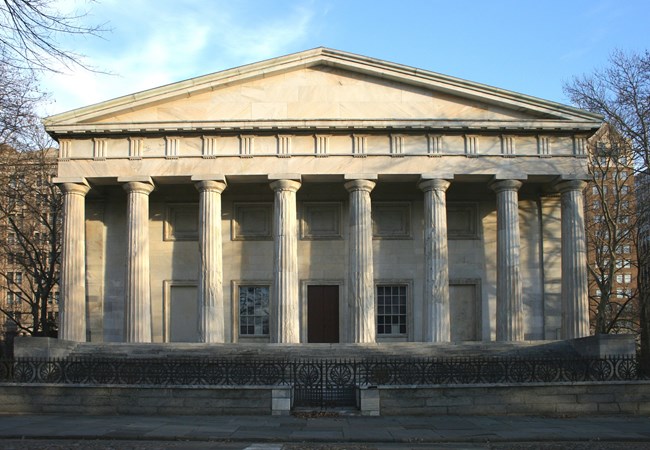
NPS
European arrivals to North American brought building forms and traditions with them, making adaptations based on needs, materials, and influences in the environment. For example, Spanish missionaries in the Southwest relied on Native American labor and construction technology in early mission churches of the New Mexico area, resulting in a combination of European and Indigenous forms. Where there was a lack of local skilled labor and Spanish artisans were brought in, such as at the mission church (1691) at Tumacacori National Historical Park in Arizona, the results were conceptually and technically more European.
Through the 1700s and 1800s, many new styles of architecture arose and existed side-by-side. Many of these styles were closely associated with contemporary artistic and literary currents and were advocated through architectural handbooks, sometimes with social statements and implications. For example, the popular Greek Revival style was associated with early Greek ideals of democracy, exemplified in buildings like the Second Bank of the United States (1819-1824) at Independence National Historical Park.
Architecturally speaking, the early 1900s were a time of renaissance and revival. Beaux-Arts classicism was a style that arose out of social and cultural forces, bringing together artists and architects in a style that expressed a grandiose spirit of American capitalism and civics. This was also a period of revived historical styles. For example, Scotty's Castle (1922-29) at Death Valley National Park, California was designed in a Spanish/Moorish style. Post-World War II architecture is largely defined by modern movements, including construction during the Mission 66 era of development in national parks.
Tracing trends in architectural style is only part of the history of structures in national parks. Vernacular structures and buildings constructed for utility are also important for their form and their use. Many historic structures derive their significance from function or events during the period, and may not have been originally constructed to be permanent or designed to be stylistically elaborate. Significant historic structures can include the quarters of enslaved people, forts, earthworks, lighthouses, canals, bridges, barns, monuments, residences, visitor centers, and more.

NPS
How are Historic Structures Preserved?
The variety of architectural and engineering works found within the National Park System is complex, and the responsibility that accompanies the stewardship of these cultural resources is enormous. When the NPS is preparing to begin historic preservation efforts on a significant building or structure, it might include creating a Historic Structure Report (HSR). The preparation of the report precedes any design plans or implementation of major preservation, rehabilitation, restoration, or reconstruction work.
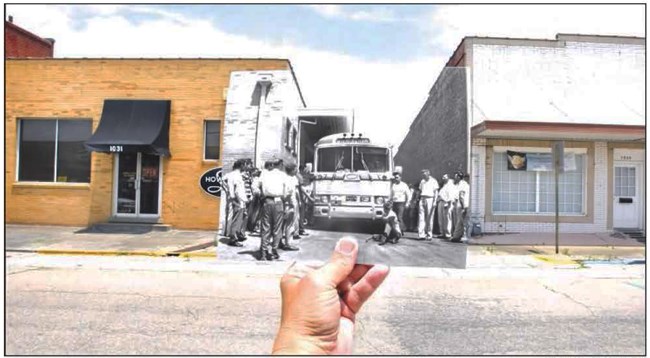
Image by Stephen Gross for the Anniston Star, January 3, 2017, in the Historic Structure Report
Historic Structure Reports might focus on a particular building. Buildings are defined by the NPS as constructed works that support habitation. Beyond buildings, HSRs can address other historic resource types listed on the National Register of Historic Places. For example, HSRs can be prepared for other structures, like bridges, canals, ships, mines, and locomotives; objects, like sculptures and monuments; and entire districts with several related buildings, like college campuses and industrial complexes.
The HSR provides a record of the structure’s history, documents existing conditions, and serves as the basis for proposing physical changes. The philosophic approach to preservation by the NPS and other federal agencies is to first perform cyclic maintenance to retain historic fabric and make repairs and replacements in-kind when needed. Secondly, missing historic features are reintroduced, and incompatible alterations since the significant period are removed. Lastly, compatible alterations or additions may be made to support continued, appropriate use of the historic property.
Like a Cultural Landscape Report, the Historic Structure Report compiles research, physical investigation, evaluation, and work recommendations. This is almost always a multi-disciplinary task, bringing together a project team that might include historians, mechanical engineers, archeologists, electrical engineers, landscape architects, curators, building code consultants, photographers, materials scientists, and others.
The teams gathers, compares, and reviews information about a structure through historical research, survey and inspection of existing conditions, creation of measured drawings, and sample material testing. Together, the historical data and physical evidence help determine the significance and integrity of the property. If a comprehensive National Register nomination or other inventory has been prepared, the significance may already be defined.
Then, the results of the research, field investigation, determination of significance, and overall objectives form the basis for developing specific work recommendations (or, preservation treatment) for the historic structure.
A Changing Practice
While the format and name of this report type has changed through the years, today’s Historic Structure Reports contain approximately the same data and serve the same purpose as earlier HSRs.
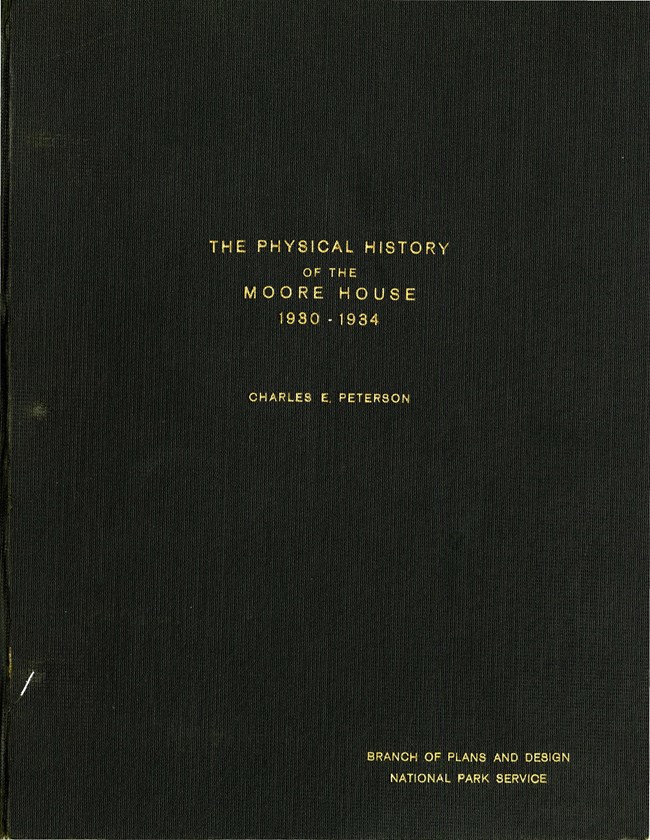
NPS
That report was prepared after restoration work on the Moore House had been completed. However, beginning in 1956, a Field Order required a "Survey Report" outlining the history, condition, and proposed work on a historic structure to be prepared and approved by park management before any physical work began. This led to the establishment of a servicewide organizational approach for preparing a HSR, which was then called a “Historic Buildings Report.” The NPS Director issued a memorandum in 1957 that outlined a multi-disciplinary approach to the preparation of an HSR and described the sections that would be included.
These administrative changes partly arose out of the growth of the National Park System following World War II, resulting in more resources in the agency’s care. Additionally, historical architects usually worked in design offices, while historians and archeologists worked in parks or regional offices. The standardization of the HSR was intended to assure a professional standard of quality and administrative order throughout the decentralized organization.

NPS
The HSR organizational structure changed again in 1971. The sections of the report were simplified, and physical work would be recorded in a new report called a “Historic Structure Preservation Guide,” which also contained maintenance information about the structure.
When the Cultural Resources Management Guideline (NPS-28), Release No. 1 was issued in October 1980, the HSR organizational structure was changed to include only three sections: an Administrative Data Section, a Physical History and Analysis Section, and an Appendix. This integrated the three professional discipline sections (Historical Data, Archeological Data, and Architectural Data) into one Physical History and Analysis Section to encourage multi-disciplinary work and more integrated recommendations to park management.
Meanwhile, the structure of a Historic Structure Preservation Guide, also described in the NPS-28 Guideline, became more detailed than it initially was according to the 1971 standards. This helped to simplify and standardize sections so they could be computerized.
A Story Map
Why Document Historic Structures?
While the reports and preservation techniques have continued to evolve with changing technologies and perspectives, today’s Historic Structure Reports serve much the same purpose as those early reports.
The report provides a case for selecting the most appropriate approach to treatment and outlines a scope of recommended work, informed by research, investigation, and analysis. It serves as an important guide for all changes made to a historic property during a project, can provide information for maintenance procedures, and records the findings of research and investigation, and physical work for future researchers.
Structures and Landscapes
Historic structures occur within cultural landscapes and are integral components of these larger resources. Often, preservation planning for historic structures considers the cultural landscape and aims to optimize both the preservation of the structure and its cultural landscape. A Historic Structures Report may be prepared in tandem with a Cultural Landscape Report, to emphasize the important relationship between the resources and need to preserve them both.The HSR Collection
This selection of Historic Structure Reports demonstrates the variety of historic structures in the agency's care and represent part of the history of the National Park Service. The reports are part of a collection created and maintained by the NPS, and they continue to serve researchers, interpreters, and park managers.
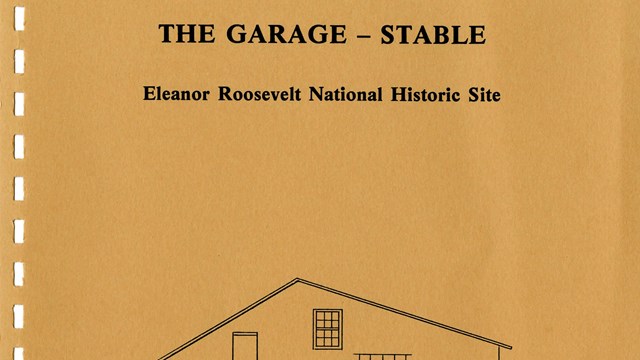
Browse references and reports in the HSR collection
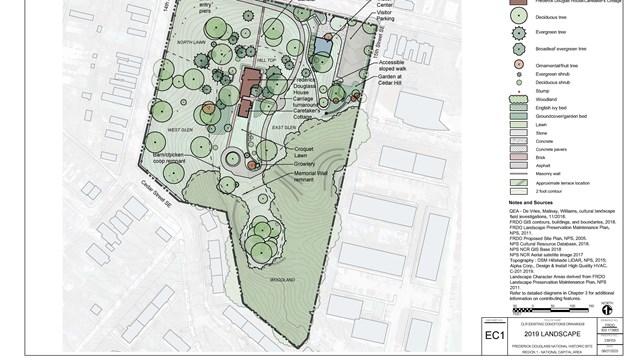
Browse references and reports in the Combined Historic Structure Report and Cultural Landscape Report collection
Examples and Galleries
Burns, John, editor, with the staff of HABS/HAER, National Park Service, U.S. Department of the Interior. Recording Historic Structures. Washington, D.C.: The American Institute of Architects Press, 1989.
Jandl, H. Ward. Preservation Brief 18. "Rehabilitating Interiors in Historic Buildings: Identifying and Preserving Character-Defining Elements." Washington, D.C.: National Park Service, 1988.
McDonald, Jr., Travis C. Preservation Brief 35. "Understanding Old Buildings: The Process of Architectural Investigation." Washington, D.C.: National Park Service, 1994.
Nelson, Lee H., FAIA. Preservation Brief 17. "Architectural Character: Identifying the Visual Aspects of Historic Buildings as an Aid to Preserving Their Character." Washington, D.C.: National Park Service, 1988.
Slaton, Deborah. Preservation Brief 43. "The Preparation and Use of Historic Structure Reports." Washington, D.C.: National Park Service, 2005.
Historic Structure Reports issue. Bulletin of the Association for Preservation Technology 14, no. 4 (1982). http://www.jstor.org/stable/1493896.
Weeks, Kay D. and Anne E. Grimmer. The Secretary of the Interior's Standards for the Treatment of Historic Properties with Guidelines for Preserving, Rehabilitating, Restoring & Reconstructing Historic Buildings. Washington, D.C.: U.S. Department of the Interior, National Park Service, Cultural Resource Stewardship and Partnerships, Heritage Preservation Services, revised 2017.

